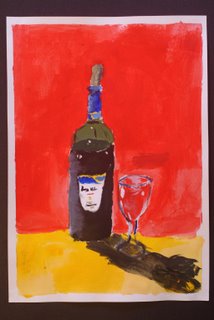
•
See event and contact information below.Wine tourism has become commonplace now that every one of the United States has at least one winery, and most of them many more.
The majority of states have created wine trails to entice tourists to tour various vineyards and wineries. Pamphlets for self-guided tours are usually free and areas are marked with unique signage to keep motorists from wandering too far off course.
But certain wine-intensive areas in the U.S. and elsewhere are taking advantage of the global boom in wine consumption to push interest to a higher level by creating centers to educate and entertain the masses.
The New York Wine & Culinary Center project, for example, opened this month after a whirlwind 10-month construction schedule.
As the facility, located on the shores of Canandaigua Lake near Rochester, begins its opening programs, a similar facility is under way on the West Coast with a projected May '07 opening.
It's the Walter Clore Wine and Culinary Center, a $9.2 million project located in Prosser, Wash., in the Yakima Valley wine region.
The Washington facility's backers foresee it as both a destination for tourists and a place for winemakers to gather. It will have a 17,500 square-foot building, vineyards, organic gardens and a public park.
The main building will have a restaurant, exhibition galleries, a theater, a demonstration kitchen, wine bar and a retail shop.
The center's namesake is the late Walter Clore, regarded as the father of Washington wine. The state is the No. 2 producer of premium wine in the United States, trailing only California.
To the south, in California's storied Napa Valley, is the 10-year-old Copia against which all other wine-centric facilities are measured.
Neighbor to such commercially popular wineries as Robert Mondavi, Beringer, Stags Leap, Coppola, Domaine Chandon and Sterling, Copia and the nearby West Coast branch of the Culinary Institute of America have helped make the region an eating-and-drinking mecca that helped fuel the rebirth of Napa, the valley's anchor city of 53,000.
Copia's subtitle is "The American Center for Wine, Food & The Arts." It's a not-for-profit cultural center and museum that has been open to the public for about four years. It includes sprawling herb, flower and tree gardens (seen above), as well as several restaurants, museums and galleries in am 80,000-square-foot building on the banks of an oxbow bend in the Napa River.
"We're a non-collecting museum," said Daphne L. Derven, curator of food and assistant drector for programs. "That keeps us on our toes to continually come up with new ways to educate and entertain our visitors."
Two years ago, on the other end of New York state, Stony Brook University came up with a different model by establishing its Center for Wine, Food, and Culture.
The idea is to split its efforts between its main campus on Long Island and its facilities in Manhattan, offering wine- and food-tasting classes, cultural lectures, and interdisciplinary symposia.
The Canandaigua wine and culinary center is more of a destination place, like its California cousin Copia, although decidedly smaller.
While the exterior is on the plain side and the landscaping news and, therefore, undersized for now, the interior has an impressive upscale Adirondack-style design, utilizing multi-hued, handworked wood wainscoting, stair railings, display shelving and counters. A 36-station kitchen and views of the lake are other highlights of the roughly $7 million project.
Director Alexa Gifford said the final look will include entrance landscaping geared toward representations of indigenous plants from the region.
"We'll have local flowers and shrubs, grape vines and the like that will set the mood for visitors," she said. "Americans in general are used to pulling into a parking lot that leaves you right up to the door. We'll be guiding people along a path that creates a mood, and then they'll walk into this beautiful facility that will build on that atmosphere."
The 15,000 square-foot center will offer hands-on courses in culinary science; interactive exhibits on New York State agriculture, foods and wines; demonstration space; and a live garden outside of the building. And, it has a tasting room with a
rotating selection of wines from New York's major regions (Niagara/Lake Erie, Finger Lakes, Hudson Valley and Long Island), a wine and tapas bar for light meals and wine-and-food pairings, a theater-style demonstration kitchen, a training kitchen for hands-on cooking classes, and industrial kitchens for credited culinary classes and corporate training.
No wine is sold at the facility, but visitors can use a computer right there to order directly from New York wineries.
Planning your tripCheck out domestic possibilities on
Dowd's Guide to American Wine Trails and U.S. and Canadian wine festivals at
Dowd's Drinks Events Calendar.
Both sites offer live links to recognized trails and events information nationwide.
To check out events and schedules at various wine and culinary centers, call or go online:
• Copia: The American Center for Wine, Food & The Arts
500 First St., Napa, Calif. 94559.
Details:
Online or by phone at (888) 512-6742.
• New York Wine & Culinary Center
800 South Main St., Canandaigua, N.Y. 14424.
Details:
Online or by phone at (585) 394-7070.
• Stony Brook University
Center for Wine, Food & Culture, Stony Brook, N.Y. 11794.
Details:
Online or by phone at 631) 632-6000.
To Dowd's Spirits Notebook latest entry.
To Dowd's Wine Notebook latest entry.
To Dowd's Brews Notebook latest entry.
Back to Dowd On Drinks






